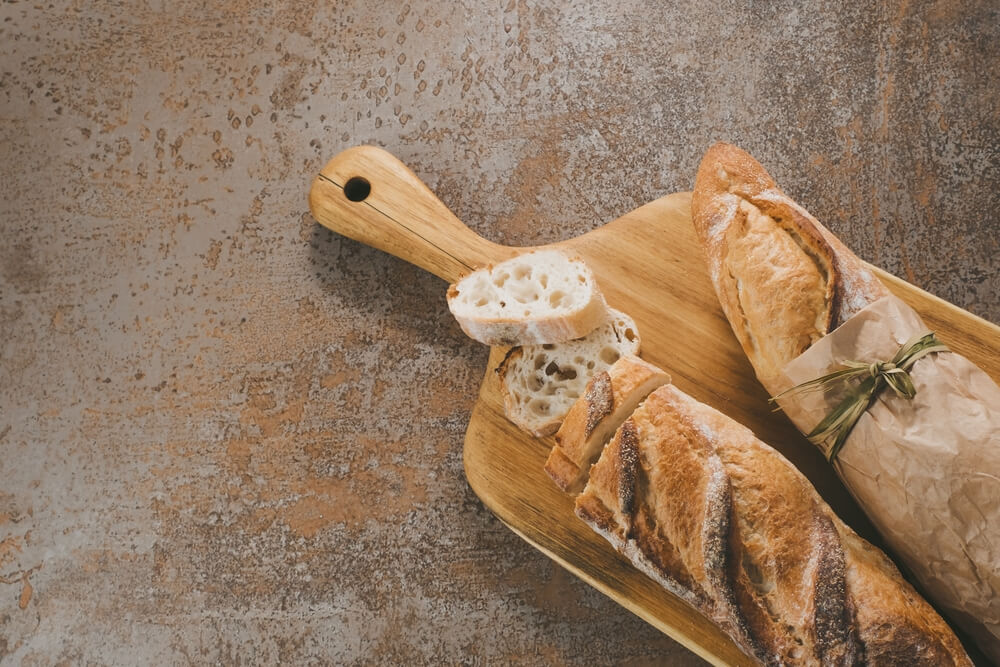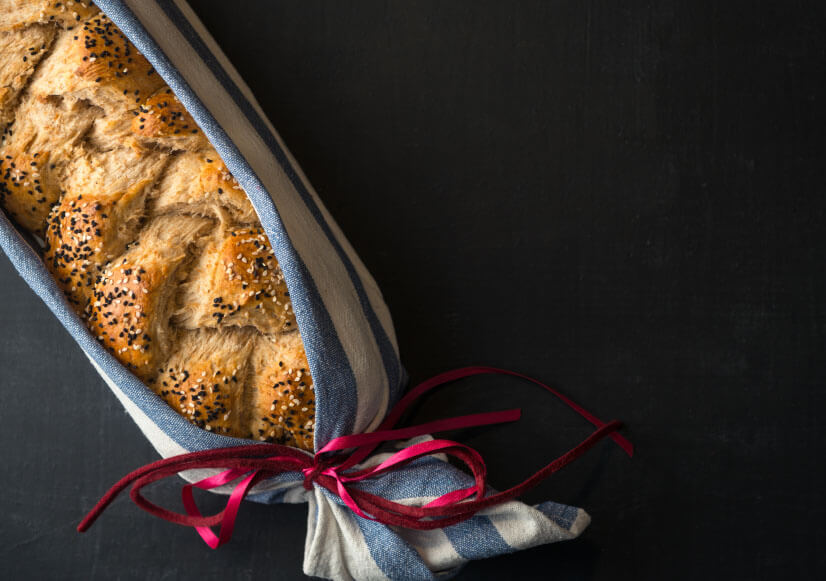Sourdough is typically known for its dense texture, thick crust and authentic handcrafted, artisan appearance. It’s perfect for café-style brunches, snacks and creating an extra special breakfast to start the day.
Many people have discovered the joys of baking their own sourdough from home over the last year or so. But what is the sudden fascination with this style of bread?
This loaf has been enjoyed for centuries. What sets it apart is that it’s made by mixing flour and water to create a ‘starter’ or fermented culture. Your starter is what creates the yeast needed for your bread to rise. The dough is then left to ferment over a period of time. The longer it’s left, the more sour the bread will be – giving it its signature taste.
This process of fermentation dates back to the days of ancient Egypt, when the Egyptians accidentally discovered the process while brewing their own beer, with all that natural yeast in the air. Today we continue to benefit from their ‘mistake’ as we get to enjoy this delicious bread.
Why won’t my dough rise?
Sourdough is simple to make yourself at home – so it’s no wonder why so many have been inspired to try making it themselves. However, while baking you might find yourself wondering ‘why won’t my dough rise?’, and whether your sourdough is rising enough.
If that’s you, we’re here to help you get to the bottom of things. Here are some of the most common reasons why your sourdough isn’t rising. Don’t worry, with these tips you’ll have your loaf on its way to delicious, crusted perfection in no time.
Let’s start with your starter – is it active?
Remember that fermented culture we mentioned? This starter ingredient is called ‘levain’, which is central to the whole fermentation process. This is essentially your rising agent. If your loaf is not rising in the oven, there could be a problem with the levain. It must be active if you want your bread to rise.
The thing about levain is that it’s classified as a living culture – which means it needs to be fed every 12 or so hours so it can double in size. Essentially, your levain is just like a plant or a human – you need to feed it regularly in order for it to thrive.
How to feed your levain
Wondering how to make your own levain? In all, the process will take about a week. Here are a few steps to follow:
- Mix 100g flour and 100ml water together, then cover and let this rest at room temperature. The lactobacillus in your flour will provide your dough with what it needs. Leave this to rest for 24 hours.
- The next day (at exactly the same time that you started yesterday), remove half the mix and throw it away. You’ll then need to add another 100g flour and 100ml water, then mix these together. Once again, leave to rest at room temperature (not in the fridge) until the same time the next day.
- On the third day, you can start to feed your starter. To do this, keep 100g of the levain, then add another 100g flour and 50ml water.
- Continue this every 12 hours until the seventh day.
- On the seventh day, you’re ready to bake!
This process may seem tedious, but it’s essential so that you ensure your levain is properly fed so your bread will rise.
Is your starter hydrated?
Your levain must also be 100% hydrated – meaning it’s equal parts flour and water in terms of weight. If your starter is too thin (ie. you’ve fed it more water than flour), then it won’t grow as it’s meant to.
What’s the best temperature for your dough?
The best temperature to keep your mixture at is about 25°C. It will be slow to rise if it’s too cold, and if it’s too warm it might rise too quickly (causing the yeast to speed up). It may also have a strange taste.
The importance of kneading
Kneading is also an important part of the process in terms of activating your starter. Stretching and folding prompts a chemical reaction between the flour and the water, allowing the two to blend and encouraging your levain to move through the bread.
This keeps it active and encourages your dough to rise once you let it rest – ideally til it has doubled in size.
Should the mix be wet or dry?
It’s important to have the right consistency for your mixture. You might be tempted to add a little more flour so it’s easier to knead and work with – however, if the mixture is too dry it won’t have as much give, and the starter will struggle to help your loaf expand.
Therefore, having a slightly wetter mixture will actually provide a much better result. It should be a thick mixture with a bit of body to it so that you’re able to knead and mould it. When you fold it, it should combine so that you can no longer see the seam. If your mixture resembles cake batter, then it’s definitely too thin and your dough won’t rise.
It’s also essential to not let your mixture dry out. Remember to wrap it in cling wrap while it rests.
How do I know if my loaf has risen enough?
You can test your loaf by pressing it slightly with your finger. If it springs back, this means it hasn’t quite fully risen yet. However, if it caves in, then it has risen too much. It may also stop rising if the mixture dries out without sufficient hydration.
Once the loaf has risen though, you can score it like a pro to give it that handcrafted, artisan look, then get ready to pop it in the oven. The beautiful smell of fresh bread awaits.
Get bready to bake: Speak to us for all your baking supplies
Here at Banneton Man, we’re here to help you get the best out of your bread and have an easy, seamless experience in the kitchen. From breadboards to trays, baskets and all the equipment and tools for baking you need, we’ve got you covered when it comes to making soft and fluffy bread with our bread making secrets.
If you have any further queries or niggling little questions to ask, get in touch with our team today. We’re here to offer our tips, advice and expertise so that you get the result you want every time and have something delicious to share with your friends and family.





